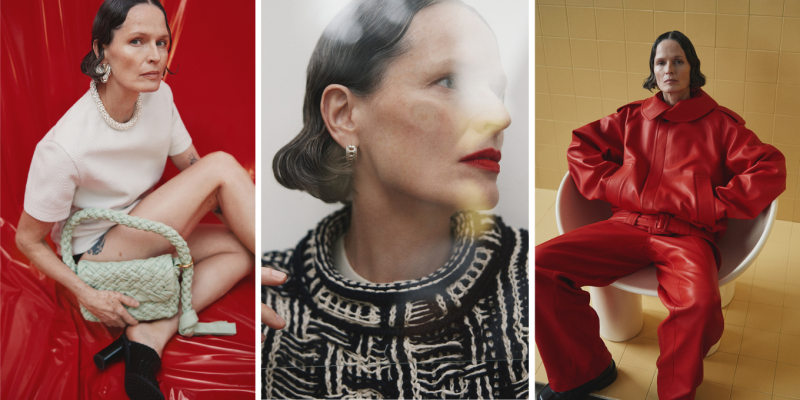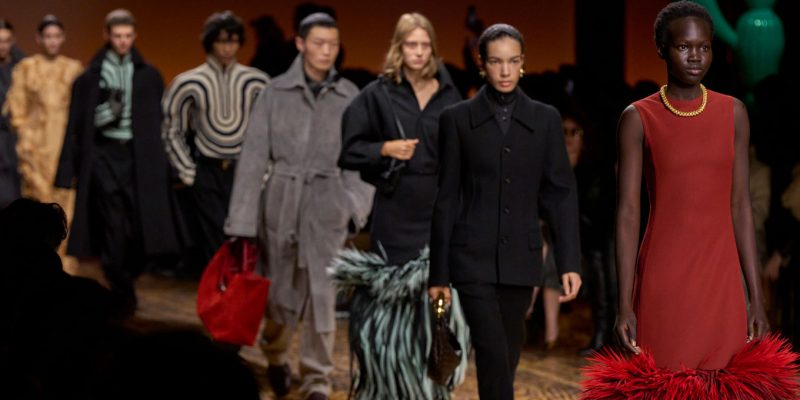Trends
Menswear Is Finally Coming Out to Play in Fashion
Let's hear it for the boys!
by : Caitlin Agnew- Mar 4th, 2022

Imaxtree (Jacquemus, Prada, Saint Laurent), Getty (D. Bowie)
Cyndi Lauper famously sang, “Girls just wanna have fun,” and nowhere is that more apparent than in the fashion world. Where womenswear designers consistently push the boundaries of clothing through experimental materials, colours and silhouettes, menswear has, of late, been rather stiff, buttoned up and dull—at least in North America. But with traditional binary gender norms being challenged and rapidly evolving technology encouraging a global connection, that sense of playful experimentation is making a major return to men’s fashion. It’s finally time for everyone to get in on the fun.
In March, Fashioning Masculinities: The Art of Menswear will open at the Victoria and Albert Museum in London, England. Sponsored by Gucci, the exhibition promises an exploration of the current unprecedented creativity in men’s fashion—a renaissance seen on the spring/summer 2022 runways, where some of the top trends included skirts, cut-outs and the colour pink. Midriffs were on display at Jacquemus, with models sporting asymmetrical crop tops and bra tops, while at GMBH, off-the-shoulder tops and blouses knotted at the waist called to mind the glamour girls of Old Hollywood. At Prada, soft baby pink made an appearance, as did the mini skort. In keeping with his vein of post-apocalyptic chic, Rick Owens offered bodysuits with cut-outs as well as footwear with high heels. Even higher heels were spotted at Saint Laurent, which creative image director Anthony Vaccarello paired with black skinny jeans and a regal yellow cape worn over a bare chest, exemplifying the collection’s “new romanticism” theme. And at Louis Vuitton, the late menswear artistic director Virgil Abloh explored acidic shades of pink and purple, skirts and cinched waists. “I try to create the world as I would like to see it in real life,” he told Vogue.com about the collection.
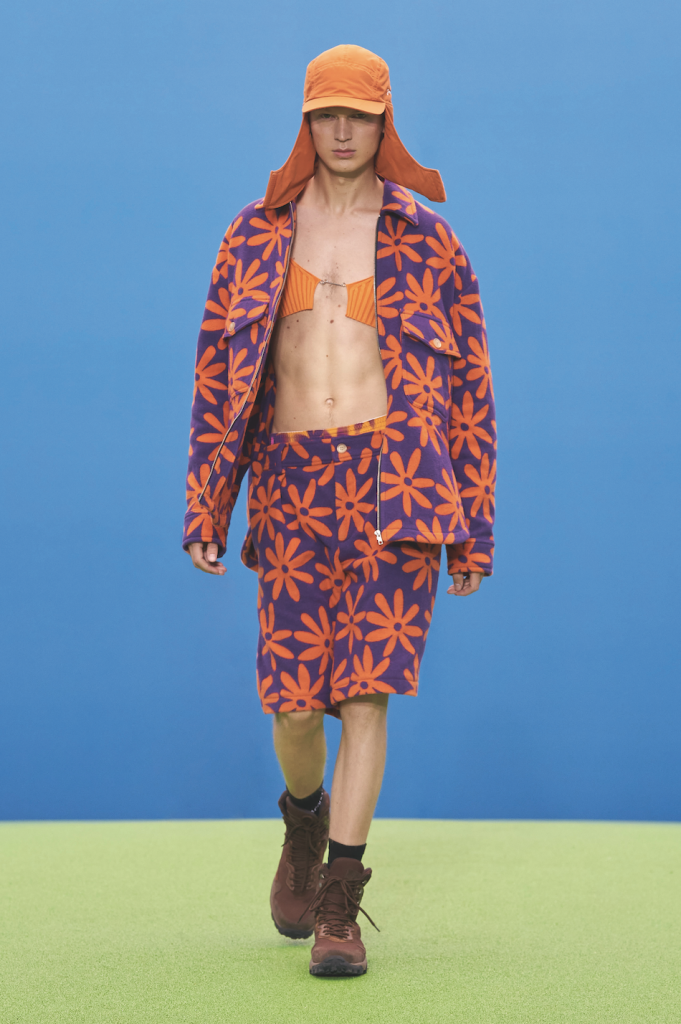 Imaxtree
ImaxtreeFor many designers, glimpses of that idealized world are a very real source of inspiration. “I think of contemporary fashion as [if it were] contemporary art,” says Michelle Tolini Finamore, a fashion and design curator and museum consultant based in Salem, Mass. She explains that when fashion designers create their collections, they are often responding to what they see on the streets. At this moment in time, it’s the erosion of gender binaries. “This younger generation has been thinking of gender as a construct rather than something that has been imposed upon them, and designers are reacting to that,” she says
Take Montreal-based fashion designer Andrew Coimbra, who has been subverting the traditions of menswear from day one. “Even when I was doing historically traditional menswear, my goal was never to do it in that context alone,” says Coimbra, explaining that his designs for men have included curvy cuts and colours that have typically been considered feminine but maintain an overall masculinity. “In those sorts of situations, I take inspiration from the womenswear world, but I still do it in a men’s way,” he says. “I was not necessarily adhering 100 percent to traditionally masculine values, but I was keeping my toe in that pool.” Now, with his gender-neutral collection, Coimbra is exploring inclusive silhouettes with form-fitting terrazzo prints, backless jackets and asymmetrical crop tops.
The novelty of these types of designs feels fresh in our heteronormative world, but historically, men in florals is hardly groundbreaking. Tolini Finamore examined some of the historical instances where men’s fashion incorporated what today would be widely considered as hallmarks of feminine design for Gender Bending Fashion, an exhibition she curated for the Museum of Fine Arts Boston in 2019. “If you go back to the 18th century, for example, and you look at the courts of Louis XIV or at any kind of men’s attire, there was definitely more freedom in terms of men wearing what would be perceived as typically feminine today—the florals, the laces, the pastel colours and tones,” she says. She points to times of dramatic social upheaval as instances where men’s fashion challenged the status quo—like 1960s counterculture, for example. It led to the “peacock revolution,” during which young men grew their hair long and championed colourful clothing with vivid psychedelic patterns and even lace trim. “That’s because the ’60s and ’70s [were] this moment of great cultural upheaval,” she says. “[There was] this ‘Youthquake,’ as Diana Vreeland termed it. This questioning of everything, really.”
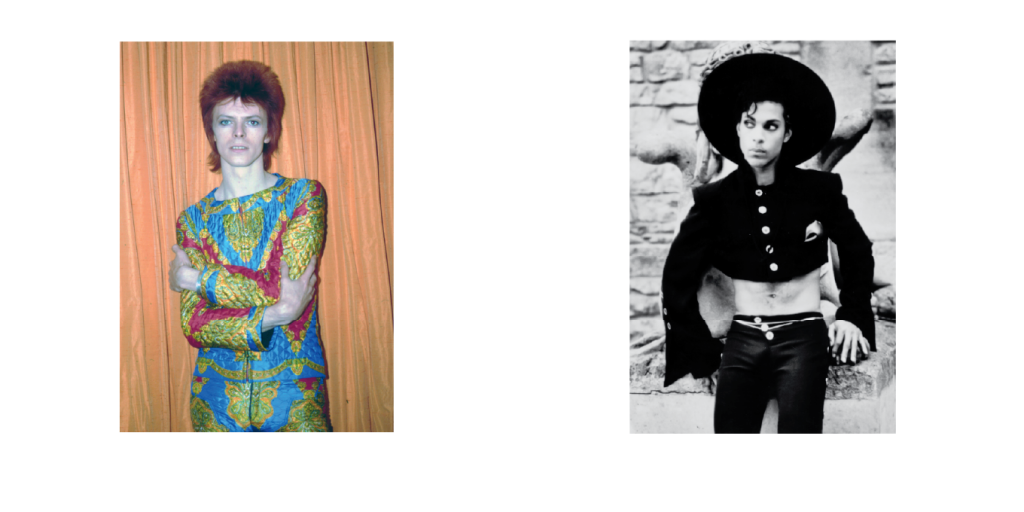 Getty (D. Bowie), Alamy (Prince)
Getty (D. Bowie), Alamy (Prince) Today, that social upheaval is playing out online. “What we have seen is that it’s liberating to be able to present yourself in a certain way on Instagram or whatever you use and that folks are not only more comfortable expressing themselves but have also found their communities through that,” says Tolini Finamore of the new-found sense of freedom displayed by millennials and gen Z. In the information age, clothing’s primary function is often to say something to your community—a concept American artist Emily Segal considers in her 2020 book, Mercury Retrograde. “The rise of fast fashion, as well as the globalization of both trade and visual codes, had contributed to a situation where the intellectual property of fashion eclipsed its physicality,” she writes. “Before, fashion physically dressed people first, and communicated with them second. Now it began to communicate with them primarily, and cover their bodies as an afterthought. Put simply, fashion turned into information.”
Models and twins Whak and Mo, based in Hamilton, Ont., are fluent in this visual code and say that it’s never been about who the clothes were intended for but how you put them together. The duo regularly wear traditionally feminized items like baby tees and pearls (an accessory that streetwear website Highsnobiety says “isn’t going anywhere,” having become a fixture around the necks of A$AP Rocky and Harry Styles) as well as women’s clothing. “Women have more options, more styles, more colours—just more everything you could go into,” says Mo. “We try to put them together in a more masculine way so that they’ll be embraced by a typical guy,” adds Whak. The pair shop nearly exclusively at second-hand and vintage stores, something they say has helped liberate them from the confines of the his and hers sections. “There are no rules because they’re just there,” Mo says of vintage racks.
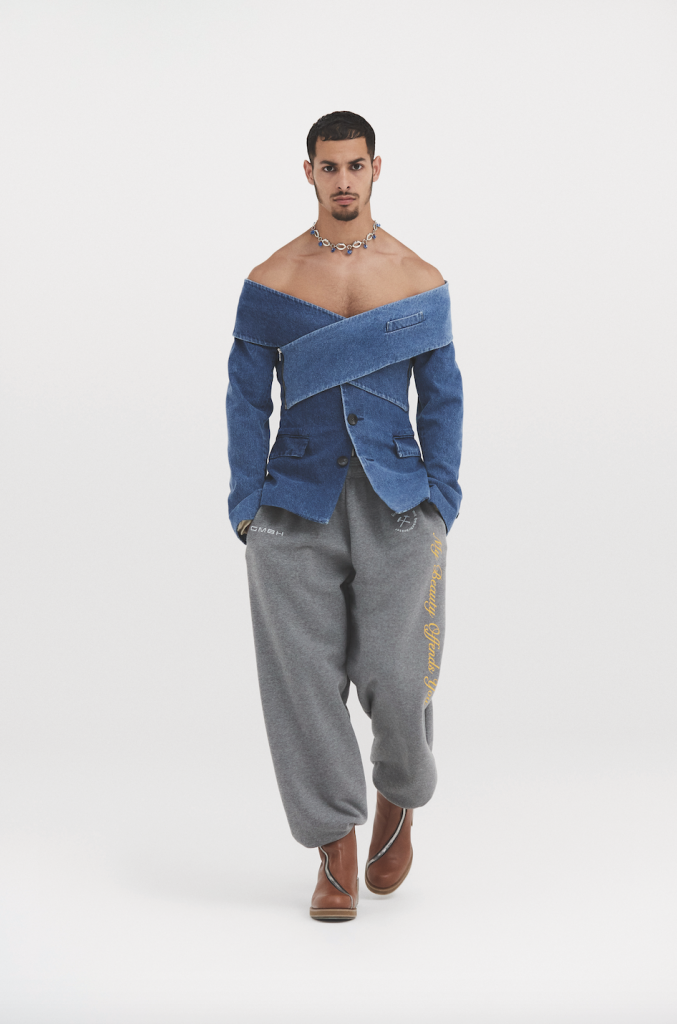 Imaxtree
ImaxtreeIt’s a shift in acceptance that Whak and Mo say has a lot to do with the style choices of those in the public eye. “Pop culture is moving toward the idea that clothes are just clothes,” says Whak. Take actors Jake Gyllenhaal, who wore a baby-pink Prada tuxedo to the Tony Awards in September, and Jason Mamoa, who famously rolled up to the Oscars wearing a pink Fendi suit with a matching scrunchie on his wrist. Musicians—like David Bowie, Prince, Boy George and Kurt Cobain (who had a thing for floral skirts and dresses and provided major inspiration for Dries Van Noten’s newest menswear collection)—have a legacy of breaking fashion’s gender rules. Then there’s the traditionally hyper-masculine world of sports, home to athletes like Los Angeles Lakers basketball player Russell Westbrook (who was spotted in an ankle-length white kilt at New York Fashion Week), former Toronto Raptor Serge Ibaka (who is rarely seen without a colourful print) and former NBA champion Dennis Rodman (whose spaghetti straps, bare midriff and technicolour hair were the epitome of 1990s style). (“[Rodman] is so cool it’s ridiculous,” says Mo.)
When studies have shown that creativity can boost your mental health, it only makes sense that everyone should be able to fully express themselves through fashion. How fun would that be?
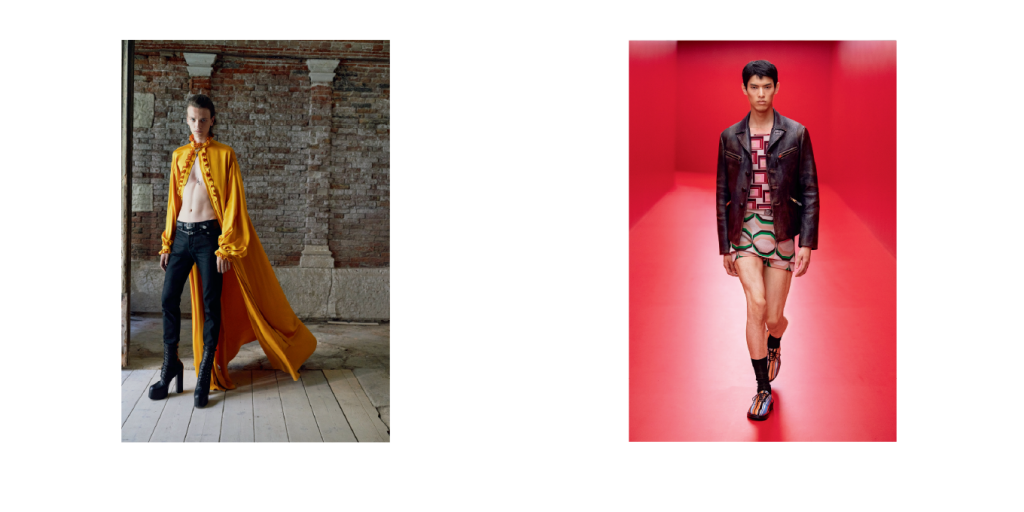 Imaxtree
ImaxtreeNewsletter
Join our mailing list for the latest and biggest in fashion trends, beauty, culture and celebrity.
Read Next

Fashion
Are Fashion Brands Getting Greener?
While the fashion industry is making a lot of noise about being more sustainable, a closer look shows that its earth-friendly commitments are often more illusion than reality.
by : Marouchka Franjulien- Apr 19th, 2024

Beauty
What Beauty Packaging Is Actually Sustainable?
We sought out leaders in the field to help us get to the bottom of the blue bin once and for all.
by : Victoria Christie- Apr 19th, 2024

Culture
This University Elevates Women to New Professional Heights
You shouldn’t have to pause your life to move forward in your career.
by : ELLE Canada- Apr 16th, 2024

